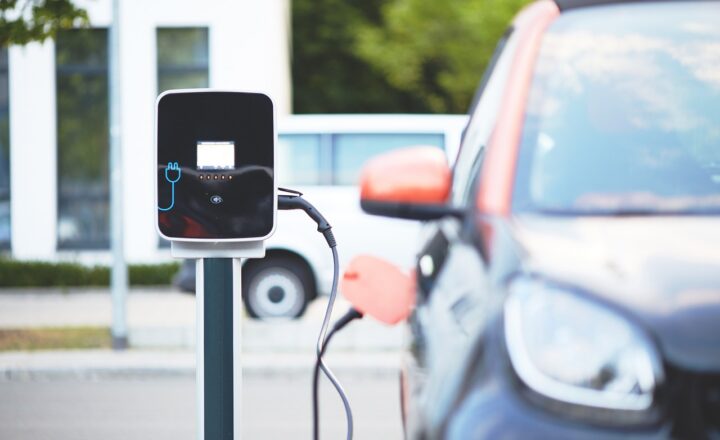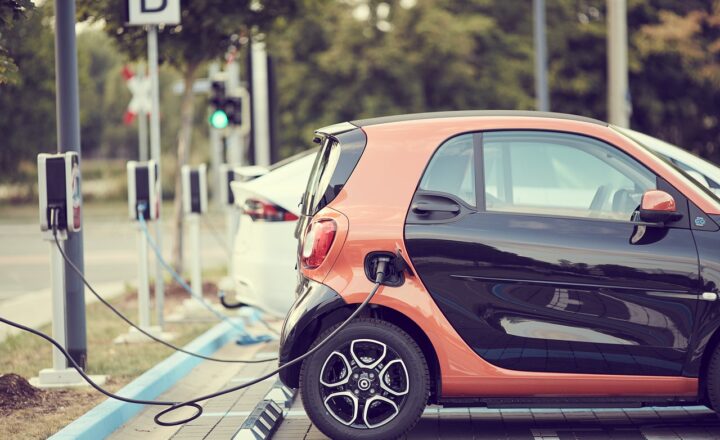Electric Cars vs. Traditional Vehicles: Which One is the Real Environmental Game-Changer?
October 20, 2024

In the modern era, where climate change and environmental sustainability have become pressing concerns, the automotive industry faces a major transition. Electric cars, once a futuristic dream, are now increasingly seen as the solution to reducing carbon emissions. But how do they really compare to traditional internal combustion engine (ICE) vehicles when it comes to being environmentally friendly? Are electric cars truly the game-changer we need, or do traditional vehicles still hold some advantages in certain contexts?
In this article, we’ll delve deep into the environmental impact of both electric and traditional vehicles, from production to disposal, and examine which technology holds the most promise for a sustainable future.
The Environmental Footprint of Electric Cars
1. Production Impact
The environmental impact of electric cars begins long before they hit the road. While EVs produce zero tailpipe emissions, their manufacturing process, especially battery production, is resource-intensive. The lithium, cobalt, and nickel used in electric car batteries need to be mined, often under environmentally harmful and unethical conditions. Mining operations can lead to deforestation, water contamination, and significant greenhouse gas emissions.
However, proponents of electric vehicles argue that advancements in battery technology are reducing the environmental toll. Research into recycling lithium-ion batteries and developing more efficient battery materials is ongoing. Moreover, many automakers are exploring less damaging ways to source these critical minerals.
Key takeaway: Electric car production, particularly for batteries, has a higher environmental cost upfront, but innovations are helping mitigate some of these issues.
2. Energy Source Matters
While electric vehicles produce no emissions when driven, their environmental benefits are directly tied to how the electricity used to charge them is generated. In regions where electricity comes from renewable sources like wind, solar, or hydro, EVs have a clear environmental edge. Conversely, in areas heavily reliant on coal or natural gas, the emissions from generating electricity can negate some of the benefits of driving electric cars.
That said, global trends are moving toward cleaner energy production. Countries like Norway, Iceland, and Costa Rica generate almost all their electricity from renewables, making electric cars a significantly greener option there. As the world transitions to greener energy sources, the environmental advantage of EVs will become even more pronounced.
Key takeaway: Electric cars’ environmental impact varies based on the local energy mix, with cleaner energy sources magnifying their benefits.
3. Driving Emissions
The most widely cited benefit of electric cars is their zero tailpipe emissions. Traditional gasoline or diesel cars emit carbon dioxide (CO2), nitrogen oxides (NOx), and particulate matter into the air every time they’re driven, contributing significantly to air pollution and climate change.
EVs, in contrast, emit nothing while on the road. This means that in dense urban areas, where air quality is a serious concern, switching to electric vehicles can drastically improve local air conditions. Reduced air pollution can lead to better health outcomes, less respiratory disease, and overall improved quality of life for city dwellers.
Key takeaway: EVs are a clear winner when it comes to reducing driving-related emissions, particularly in urban areas where air pollution is a critical issue.
The Environmental Footprint of Traditional Vehicles
1. Fossil Fuel Dependency
Traditional internal combustion engine vehicles run on gasoline or diesel, which are derived from fossil fuels. Extracting, refining, and burning fossil fuels all contribute to environmental degradation. Oil extraction, in particular, can result in deforestation, oceanic spills, and habitat destruction. Additionally, the combustion of fossil fuels releases large amounts of greenhouse gases into the atmosphere, exacerbating global warming.
Despite advances in fuel efficiency and cleaner-burning engines, ICE vehicles will always have a baseline environmental cost due to their reliance on non-renewable resources. Moreover, the continued use of gasoline-powered cars prolongs the global dependence on oil, a finite resource that is becoming increasingly difficult and environmentally destructive to extract.
Key takeaway: Traditional vehicles are inherently tied to the fossil fuel industry, which is a significant contributor to environmental degradation.
2. Emissions and Air Pollution
Every time a traditional vehicle is driven, it releases harmful emissions into the atmosphere. The average car emits around 4.6 metric tons of carbon dioxide per year, contributing to climate change. Additionally, traditional vehicles produce nitrogen oxides and particulates that contribute to smog, acid rain, and respiratory illnesses in humans.
While technologies like catalytic converters and particulate filters have improved the cleanliness of ICE vehicles, they still fall far behind electric cars in terms of emissions reductions.
Key takeaway: Even with improved technologies, traditional vehicles remain a significant source of air pollution and greenhouse gases.
3. Infrastructure and Fueling
Traditional vehicles benefit from a well-established infrastructure of gas stations, repair shops, and supply chains that have been built over a century. This makes them incredibly convenient for consumers. However, this infrastructure is based on continued fossil fuel extraction and consumption, which is not sustainable in the long run.
In contrast, while EV charging infrastructure is expanding rapidly, it still lags behind in many areas, making long-distance travel more challenging for electric car owners. But with major investments from governments and private companies, the gap is closing fast.
Key takeaway: Traditional vehicles benefit from established infrastructure, but this infrastructure is tied to an unsustainable fossil fuel-based economy.
The Lifecycle Perspective: From Cradle to Grave
1. Production to Disposal: Electric vs. Traditional
When comparing the overall environmental impact of electric and traditional vehicles, it’s crucial to look at the entire lifecycle, from production to disposal.
As previously mentioned, electric vehicle production, particularly battery manufacturing, has a higher initial environmental impact. However, over the vehicle’s lifetime, electric cars tend to outperform ICE vehicles in terms of reduced emissions. A study from the European Environmental Agency (EEA) found that electric vehicles, even when charged using a mixed energy grid, produce significantly lower emissions over their lifetime than traditional cars.
On the disposal side, recycling is another key factor. The batteries of electric vehicles pose a recycling challenge due to the hazardous materials they contain. However, initiatives to improve battery recycling are gaining traction, with companies and governments working on ways to reuse and recycle batteries more efficiently.
Key takeaway: While electric cars have a higher production impact, their lower emissions during use make them a better long-term choice for the environment.
2. Battery Technology and the Future
The future of electric vehicles largely depends on advancements in battery technology. Solid-state batteries, for example, promise higher energy density, faster charging, and longer lifespans, all while reducing the environmental impact of production. As these technologies mature, the advantages of electric cars over traditional vehicles will likely become even more pronounced.
Key takeaway: Advancements in battery technology will further tip the environmental balance in favor of electric vehicles.
Conclusion: The Verdict on the Environmental Game-Changer
So, which is the real environmental game-changer: electric cars or traditional vehicles?
From an environmental perspective, electric vehicles are undoubtedly the better choice, particularly as renewable energy becomes more prevalent. While they do have a higher upfront environmental cost in terms of production, especially battery manufacturing, their zero tailpipe emissions and potential for being powered by clean energy make them the clear winner in the long term.
However, traditional vehicles still dominate in terms of infrastructure and convenience, particularly in areas where EV charging networks are underdeveloped. That said, the shift toward electric vehicles is inevitable as more governments and consumers recognize the urgent need to reduce greenhouse gas emissions and combat climate change.
In the end, electric cars represent the future of sustainable transportation, and as technology improves, they will only become more efficient, affordable, and environmentally friendly.





